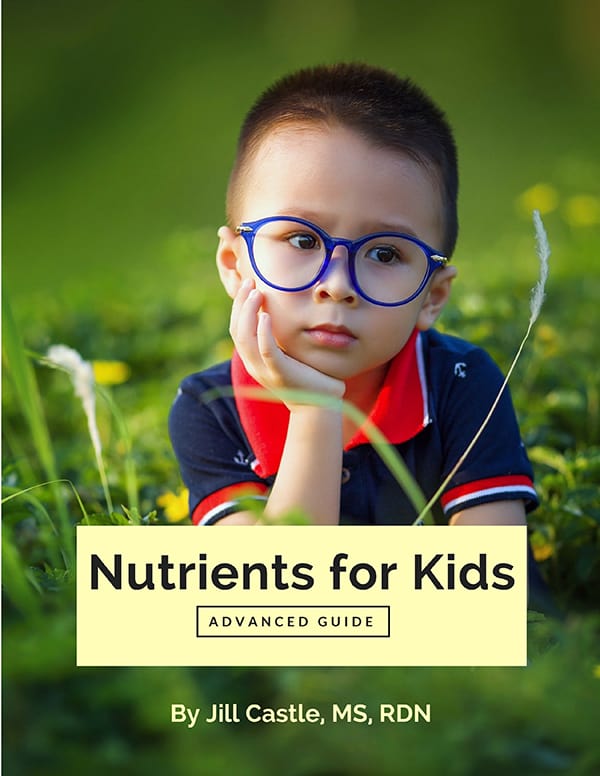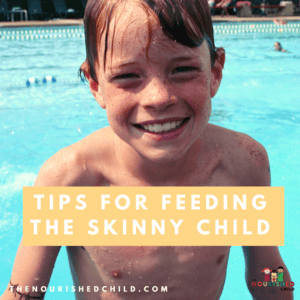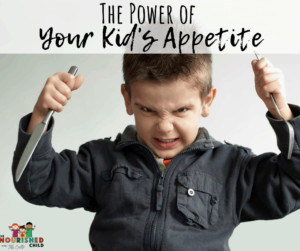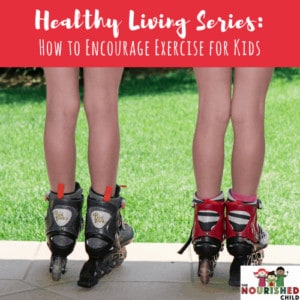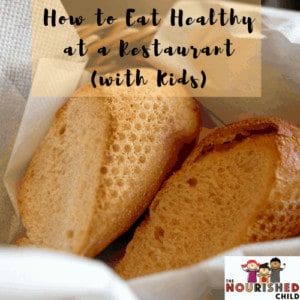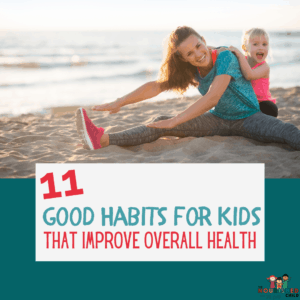Multiple Food Allergies: 7 Dangers for Children
July 17, 2019
When your child has more than one food allergy, it can be a challenge to nourish him well. Learn how multiple food allergies may affect your child’s nutritional status, growth and eating.
According to the Food Allergy Research and Education (FARE), about 1 in every 13 kids under the age of 18 has a food allergy.
Common childhood allergies include the Big 9, or these eight foods: milk, soy, egg, peanut, tree nut, fish, shellfish and wheat, plus sesame.
About 30% of children have more than one allergy to food, or what is called multiple food allergies.
As a pediatric nutritionist, I’ve noticed a growing trend of kids who have more than one food allergy.
My son’s a good example of this.
Initially diagnosed with a tree nut allergy (which for him included cashew and almond), he later showed sensitivity to raw pumpkin.
In this article, I’ll dive into the nutrition challenges for kids with more than one food allergy, particularly focusing on nutrition, growth and eating.
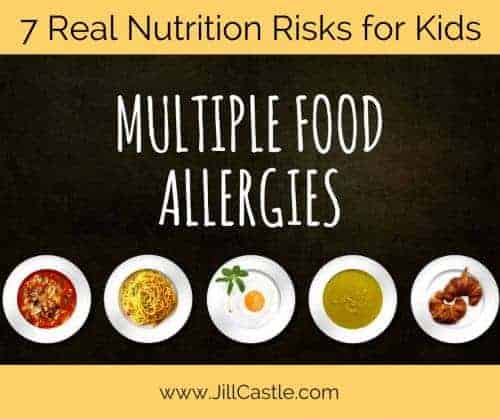
Food Allergies & Cross-Reactions
It’s not uncommon to see children with an allergy to milk, egg, and peanut, or another combination of food sensitivities.
Some food allergens seem to go hand in hand, such as milk and soy allergy, and peanut and tree nut allergy.
Certain foods may “cross-react” due to the similarity of their protein structures, making the likelihood of having an additional food allergy possible.
For example, in my son’s case, he’s allergic to almond, which can cross-react with hazelnut. He’s also allergic to cashew, which can cross-react with pistachios.
We steer clear of all four of these allergens for this reason.
The Allergic Child: 7 Nutrition Dangers
Living with many food allergies presents a unique set of challenges, from possible growth problems to potential nutrient deficiencies.
If you’ve got an allergic kid, you’ll want to be aware of the risks.
1. Multiple Allergies Means a Limited Diet
When a child has a food allergy, it requires complete elimination of the offending allergen from the diet. For example, if your child is allergic to milk, all milk and milk products must be removed.
The same goes for the other allergens — even the uncommon childhood allergies.
Whatever your child is allergic to, that food allergen, and all foods and products made from it, or with it, must be avoided.
Avoiding whole foods or food groups, such as egg or dairy, respectively, may significantly limit the variety of food that your child eats.
A child who eats a diet with limited variety will always be at an increased risk for nutrient deficiencies and poor growth.
2. Children with Food Allergies are at Risk for Nutrient Deficiencies
As mentioned above, avoiding certain foods and food groups may place some essential nutrients at risk. Here are some of the most common nutrients at risk, based on the food allergy:
Allergic to Milk
If your child is allergic to milk, then calcium and vitamin D may be challenging to supply in recommended amounts, unless you find alternate food sources.
Many families use either natural or fortified sources of calcium and vitamin D to include in the diet. [Read: The Calcium Handbook]
Allergic to Wheat
If your child can’t eat wheat, you’ll need to ensure that your child eats other sources of B vitamins and folate.
The bottom line is this: You need to know the ‘at risk’ nutrients so you can find other foods that will fill those gaps.
3. Poor Eating in Children
Kids who have more than one food allergy may be poor eaters.
They may get bored with their diet, or stuck on eating the same foods, reducing the number of foods they eat and nutrients in the diet.
A fear of an allergic reaction when eating can limit a child’s eating as well.
Toddler food allergies can be particularly challenging.
When toddlers are going through picky eating, this can really put pressure on the situation. Food variety, appetite and a willingness to try new food may suffer.
4. The Allergic Child Doesn’t Eat Enough
You can see where this is going. Poor eating may mean your child isn’t getting enough calories and nutrients.
Inadequate calories can lead to weight loss, lack of weight gain and/or stagnated growth in your child.
This can lead to poor weight gain and growth. One way to avoid this is to seek and offer a wide variety of foods.
A routine with meals and snacks helps create opportunities for your child to eat as well.
5. More Than One Food Allergy can Lead to Food Boredom
Another risk is eating the same “safe” foods day in and day out. It’s easy to get repetitive in this area!
While safe foods are essential for managing allergic reactions to food, truth be told, this may get boring for your child.
Food boredom can cause poor eating, inadequate nutrient intake, poor nutritional status, and weight disturbances.
Thankfully, there are so many options for food allergic kids to eat a variety of foods and stay safe.
Check out my 25 Food Allergy Friendly Snacks for School to get some quick ideas.
6. Childhood Allergies May Mean Poor Growth
Multiple food allergies are a known risk factor in the development of nutrient deficiencies and inadequate growth in children, as I’ve described above.
Milk, wheat, egg and soy allergies appear to be the most troublesome for children.
A study in the UK looked at children with food allergies and evaluated their weight status. The authors found that kids with food allergies tended to be more underweight than their peers without food allergies.
The children with more than three food allergies were more likely to be underweight, presumably due to dietary restrictions and inadequate intake.
[Read: Feeding the Skinny Kid]
Another study reviewed six research articles looking at the impact on weight and growth.
The authors concluded that a child with food allergies has a higher risk of growth failure and may have a higher risk of inadequate nutrient intake than kids without food allergies.
[Resource: The Essential Nutrients for Kids Book]
For this reason, I advise you see your pediatrician regularly to evaluate your child’s growth and development.
Make those routine appointments with your healthcare team, including a registered dietitian to help with food balance and variety.
7. Child Food Allergies Can Lead to Other Problems
In addition to the above potential consequences, long-term medical conditions can develop when your child’s diet is poorly managed.
For example, if you don’t have a replacement for the bone nutrients calcium and vitamin D for the child with milk or soy allergy, your child will be at higher risk for poor bone health (ie, fractures) and a vitamin D deficiency.
Make sure to find other sources of calcium when a milk allergy exists, and pay particular attention to vitamin D foods while getting reasonable sun exposure.
What You Can Do When Your Kid is Allergic to Everything
When your child has many food allergies, you have to be vigilant about food, including potential ingredient changes in products, restaurant cross-contamination, and more.
- Double check package ingredients – they can change without warning.
- Always ask the server when out in restaurants about ingredients, and inform them you have a child who has many food allergies.
- Carry your Epi-Pen and other meds with you, just in case.
- When in doubt, leave it out. And bring your own food if you’re unsure of the eating scene.
The good news is that these risks and negative outcomes can be prevented.
With a variety of nutritious foods, adequate nutrients, and sufficient monitoring by your health care team, allergies can be managed healthfully.
I dive into this subject on my podcast with food allergy expert Marion Groesch — Tune in to hear her sage advice and deep experience with kids who have food allergies.
Also, read When Can I Start Giving Peanut Butter to my Baby? and Egg Allergy in Children.

